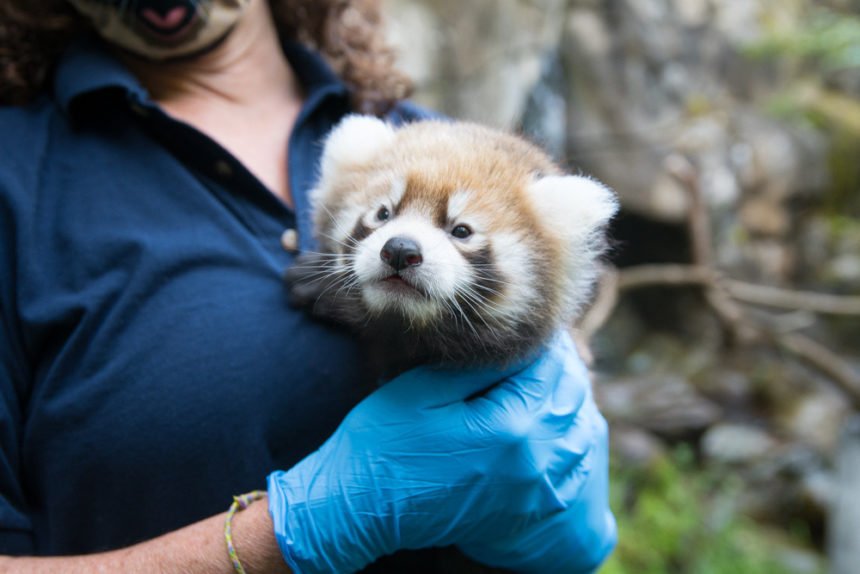It’s a boy! Oregon Zoo’s red panda cub gets his first vet check

PORTLAND, Ore. (KTVZ) — Veterinarians and animal-care staff conducted their first examination of Mei Mei’s 6-week-old red panda cub at the Oregon Zoo on Monday, and answered a question that’s been on a lot of people’s minds: It’s a boy!
Mei Mei, a 4-year-old red panda at the Oregon Zoo, gave birth to her cub on June 18. Since then, animal-care staff have been taking a hands-off approach, giving the mom and newborn as much privacy as possible in a behind-the-scenes maternity den
“As her cub grows, Mei Mei has been spending more time outside and away from the den box,” said animal curator Amy Cutting, who oversees the zoo’s red panda area. “Today, we had a chance to go in and do our first veterinary checkup.”
With mom otherwise occupied, the zoo’s animal-care staff conducted a complete physical exam of the cub, confirming he is a male weighing about 2.5 pounds.
To see video of the cub, go to: https://youtu.be/wnc6Xh65T2A.
“Mei Mei has been a terrific mom so far, and her boy appears to be in great health,” Cutting said. “We’ll still be taking a mostly hands-off approach, and let the cub gradually get used to our care staff. It will be another month or so before he ventures out of the den box on his own.”
Mei Mei and Moshu, the cub’s father, are no strangers to the parenting game. The pair — who both came to Oregon in 2019 on a recommendation from the AZA’s Species Survival Plan for red pandas — also produced two cubs at the Nashville Zoo in 2017.
Red pandas are considered an endangered species, with populations declining by about 50% in the past 20 years. While exact numbers are uncertain, some estimates indicate as few as 2,500 may be left in the wild.
In addition to habitat loss and fragmentation, red pandas also face threats from poaching and the illegal wildlife trade.
“Fifty years ago, red pandas had healthy populations throughout the eastern Himalayas,” Cutting said. “But they’ve been disappearing at alarming rates. Hopefully, we can start a new chapter in the conservation of a species that is sharply declining in the wild.”
Though they share part of their name with giant pandas, red pandas are in a class all by themselves: The sharp-toothed, ring-tailed omnivores are the only members of the Ailuridae family.
Found in the montane forests of the Himalayas and major mountain ranges of southwestern China (Nepal, India, Bhutan, China and Myanmar), their striking red, white and black fur provides camouflage in the shadowed nooks of the trees amongst reddish moss and white lichens.
As part of the Metro family, the Oregon Zoo helps make greater Portland a great place to call home. Committed to conservation, the zoo is currently working to save endangered California condors, Oregon silverspot butterflies, western pond turtles and northern leopard frogs.
The Oregon Zoo Foundation is leading efforts to fund critical needs of the zoo during its reduced-capacity reopening. To contribute, go to oregonzoo.org/donate. Members, donors and corporate and foundation partners help the zoo make a difference across the region and around the world.